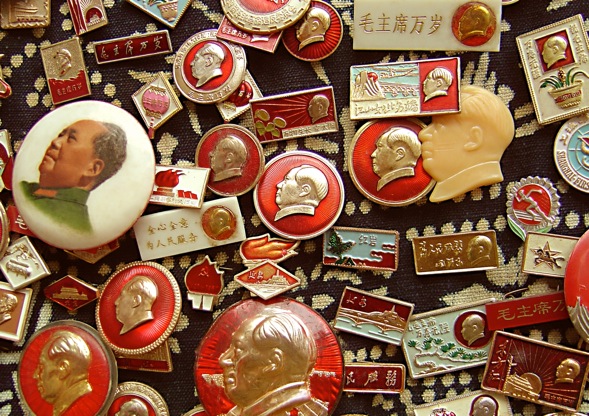In 1783 George Washington led his fellow Americans to victory. He could have then claimed power over the newly-independent states, but he surprised everyone by resigning as commander-in-chief. This act won admiration from foes and led King George III to call Washington “the greatest character of the age”. In 1796 Washington again denied himself power when he refused a third term as President. He set a precedent that strengthened the institutions of government and the presidency, setting the stage for the United States to become a global power.
The West has had a long history of limiting the power of leaders and transferring them to institutions. Centuries before George Washington denied kingship of America, the Magna Carta limited the powers of the English Crown and encouraged shared ownership, laying the foundation for the rise of the British empire.
In Asia institutions tend to exist in the shadow of powerful leaders. It is common for leaders to appear to subvert institutions to be seen as strong. We tend to believe that CEOs and political leaders are beyond reproach and that we should be grateful for their leadership. On the plus side, this type of power creates conditions for doing things quickly and makes Asians reliable managers. However, weak institutions are unable to fix the problem of poor leadership. When so much depends on so few, it’s hard to create conditions for innovation.
This preference for personality over institution means that family names matter and strong leaders tend to stay in power longer. In a fast-changing world with a more educated workforce, this limits Asian organisations from becoming truly powerful institutions. For all of Asia’s advantage in terms of heritage and size, the organisations that shape today’s world in terms of innovation, business thinking and cultural influence are still distinctively Western.
The hard truth is that most leaders eventually outlive their usefulness and relevance. The test of enduring power is how your ideas persist when you are no longer around. As a leader, you must not only lead in the present but also think about how others will lead after you.
An important factor for sustained performance in many of the world’s best companies is leadership succession. Procter and Gamble (P&G) started out as a family-owned enterprise, but in 1887 William Arnett Procter began a profit-sharing programme. The workers then gained a sense of ownership and made a greater contribution to the company. Eventually P&G groomed staff to rise up the ranks and help lead the company. Today its fabled corporate culture allows P&G to be among the few companies that continues to promote CEOs from within.
The new generation of Asian companies seems to appreciate this. Companies such as Lenovo and Huawei are professionally run and are investing more and more in developing talent and building institutions. After taking over the PC business from IBM, Lenovo has proved critics wrong by retaining staff and introducing better products. Tata Group of India is another great example in terms of how it has evolved from a family enterprise into a global conglomerate with talents from all over the world.
For Asia to shape the new world order, we need stronger Asian organisations that can stand the test of time. In our work, we have found that organisations that have strength in the following 9 Dimensions – presented here in three distinct sections – have a better shot at achieving lasting power.
Code of beliefs
Every organisation is unique even within the same industry. Many organisations miss out on the opportunity to identify what characteristics have helped them to thrive in trying times. They fail to turn their beliefs into a code to guide their development. This contributes to high staff turnover, as there is no reason to stay beyond just getting paid.
1. Founders
All great companies have iconic leaders. Use them as learning tools rather than view them as idols. When leaders share the aspirations and the dilemmas they had during the founding years, emerging middle management develops a better understanding of the work that they do. This repository of leadership know-how should eventually become a guiding doctrine on running the business.
2. Purpose
Define the fundamental reason for the company’s existence. Companies without a clear understanding of their value proposition and the meaning of their work are not likely to succeed, much less attain longevity.
3. Inspiration
Every company has an inspiring story, but few bother to document it. Companies that are able to draw inspiration from their shared history and encourage staff to continue sharing stories that reflect company values have a higher sense of ownership.
Exercise of Power
How you exercise power sets a precedent for the organisation to grow in the future. If you seek scalability, you need to create and follow processes to ensure future success.
4. Broader Leadership
Build a succession plan to keep great talent and ensure the longevity of the firm. Put every emerging leader to the test before letting them enter the top echelon of leadership. Companies that promote leaders based on how they deal with and recover from failure are usually strong enough to deal with future challenges.
5. Government
Institutionalise power to secure growth. In Consulus senior partners serve seven-year terms before seeking renewal. We then set up internal commissions that establish internal practices and review their performance. When people see that you are serious about respecting the rules, they make a greater effort to innovate and contribute. Otherwise, it weakens commitment within the organisation to build for longevity.
6. Know-how
No organisation has ever made it to the top with weak knowledge transfer. Organisations that fail to harness their know-how tend to produce managers but not leaders. Set aside time for internal learning and identify emerging leaders who are able to generate and share useful insights.
Securing Legitimacy
With every generation, organisations must fight to stay relevant. The challenges are different every time, so it’s all about creating conditions for the team to pay attention to the meaning of their work and to find innovative ways to serve partners and customers.
7. Activists
In business there are customers and there are fans. Identify what type of fans you have and why they feel so strongly about your work. Activists help organisations stay true to the purpose of their work. Set up a process to receive feedback, good or bad. Negative feedback is not necessarily a bad thing, as it can help your organisation improve.
8. Promise
As technology evolves, review the way the organisation delivers its promise. Many Asian firms like to argue the benefit of heritage while ignoring that the broader business trends have changed. For example, people will always shop for clothes, but they may not always buy them from physical stores. Paying attention to changing expectations and means of delivery makes a difference in ensuring longevity.
9. Practice
A truly powerful organisation creates rituals and has followers adopting them. The difference is whether you consciously start them or have the customers create them for you. Most Asian organisations fail to appreciate and much less harness the power of the rituals that they have unknowingly created.
At the end of the day, power itself is an abstract idea, but it can be perceived in the way we wield it and the outcomes we produce. Everyone has the power to influence and shape people’s lives. Whether its impact will last depends on how well we exercise our power in the present.
Photos: Wikipedia, CBCEW, CNBC





